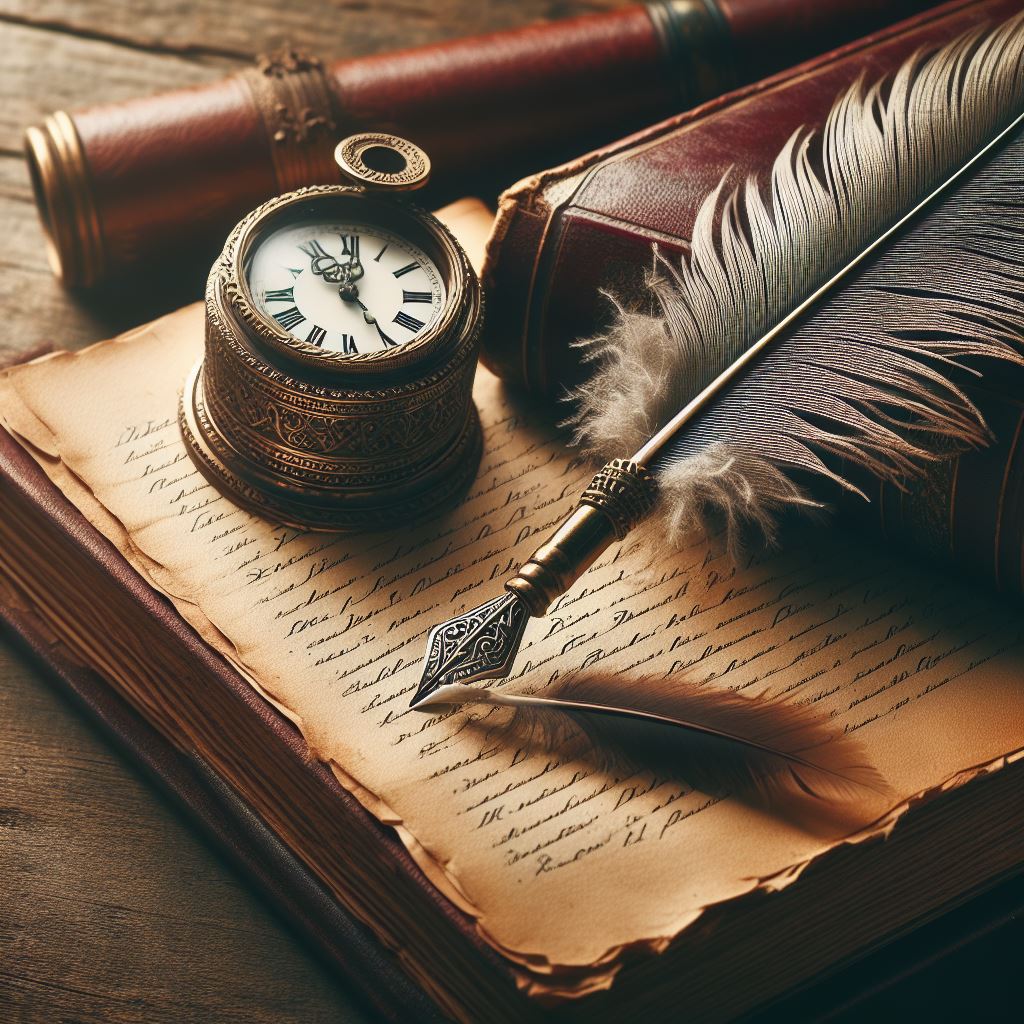Charles Dickens’ famous books still capture the attention of readers. These give lessons and show multiple sides of the society. He highlights social injustice and inequalities of his time in his literary works. It is hard to count one as Charles Dickens most famous book because all his works are memorable.
What book made Charles Dickens famous
“Sketches by Boz” was published in the early 1830s. It was the start of the professional writing of Charles Dickens. After this, the audience of the writer developed. However, the real breakthrough he got from “The Pickwick Papers”. It got Dickens recognition and immense popularity. In addition, “A Christmas Carol”, “Great Expectations” and “Oliver Twist” are also included in the Charles Dickens famous books list.
Exploring the enduring impact of Charles Dickens’s books we will discuss 8 famous books written by Charles Dickens. Along with their little synopsis:
1. A Tale of Two Cities (1859)
“A Tale of Two Cities” defines the time of the French Revolution. Its first line got very famous, “It was the best of times, it was the worst of times”, the novel captures the turbulent climate of the time.
Synopsis
It is a historical novel. It is set in London and Paris. There are scenes post and during the French Revolution. Dickens tells experiences of different characters in the story. We find Charles Darnay, a French aristocrat and Sydney Carton, a dissipated English Lawyer. There are different themes of the story such as resurrection, sacrifice and the contrast between the two cities. In addition, the writer unfolds a compelling narrative of love of the late 18th century. As the story proceeds, readers find the lives of characters interconnected. It leads to a dramatic climax. Such a situation reflects the chaos of the French Revolution.
2. Great Expectations (1860-1861)
“Great Expectations” is a story of an Orphan boy, Pip. His sister raises him. The boy faces societal challenges. Actually, that is the journey of his self discovery. It is the story of moral growth, ambition and love.
Synopsis
Pip starts as an orphan. He helps a runaway convict and later meets a fancy lady named Miss Havisham and her cold but pretty daughter, Estella. As Pip grows up, he gets a surprise fortune and moves to London. The story teaches us about being kind, finding out who we are, and dealing with rich and poor differences. Pip learns about love and being true to yourself in this exciting tale with lots of interesting characters and surprises.
3. Oliver Twist (1837-1839)
The story of an orphan boy, Oliver, who faces hardships in the criminal underworld of London. It’s famous for characters like Fagin and the Artful Dodger.
Synopsis
“Oliver Twist” tells the story of a young orphan, Oliver, who endures a harsh childhood in a workhouse and then runs away to London. There, he falls in with a group of juvenile criminals led by the sinister Fagin. Unbeknownst to Oliver, he has a connection to a wealthy family. Through a series of adventures and trials, Oliver encounters both kindness and cruelty. The novel exposes the harsh realities of the 19th-century social and legal systems, highlighting the plight of orphans and the struggles of the poor. In the end, Oliver’s true identity is revealed, and he finds a chance at a better life. Dickens uses the story to critique societal injustices and advocate for compassion and reform.
4. David Copperfield (1849-1850)
Considered Dickens’s most autobiographical novel, it follows the life of David Copperfield from childhood to adulthood, portraying various characters and experiences.
Synopsis
“David Copperfield” is the autobiographical novel of its titular character, tracing his life from birth to adulthood. David faces numerous challenges, including the cruelty of his stepfather, Mr. Murdstone, and the hardships of working-class life. He experiences love, loss, and betrayal, all the while pursuing his aspirations to become a gentleman and a writer. The novel introduces a cast of memorable characters, including the eccentric Mr. Micawber and the kind-hearted but troubled Uriah Heep. As David navigates the twists and turns of his life, the story unfolds as a compelling coming-of-age tale, offering insights into Victorian society and the resilience of the human spirit.
5. A Christmas Carol (1843)
A beloved novella that tells the story of Ebenezer Scrooge and his transformation after encounters with ghosts on Christmas Eve. It’s a classic Christmas tale with a powerful message of redemption.
Synopsis
“A Christmas Carol” is a novella that follows the transformation of the miserly Ebenezer Scrooge on Christmas Eve. Scrooge, known for his disdain for Christmas and indifference to the welfare of others, is visited by the ghost of his deceased business partner, Jacob Marley. Marley warns Scrooge of the consequences of his miserly ways and tells him he will be visited by three spirits.
The Ghosts of Christmas Past, Present, and Yet to Come take Scrooge on a journey through time, showing him his own past, the joyous celebrations of the present, and the grim future that awaits if he doesn’t change. These experiences evoke a profound change in Scrooge, awakening his compassion and generosity.
In the end, Scrooge embraces the spirit of Christmas, mending relationships, and becoming a benefactor to those in need. The novella is a timeless tale of redemption, emphasizing the importance of kindness, generosity, and the joy of the holiday season.
6. Bleak House (1852-1853)
A complex narrative intertwining the lives of various characters with the infamous court case of Jarndyce and Jarndyce. It’s a critique of the legal system and societal issues.
Synopsis
“Bleak House” is a novel that weaves together two narrative threads—one following Esther Summerson, an orphan raised by her godmother, and the other examining the complex legal case of Jarndyce and Jarndyce. Esther, unaware of her parentage, becomes entangled in the lives of various characters, including the enigmatic Lady Dedlock.
The novel explores the intricate and often absurd workings of the British legal system through the Jarndyce and Jarndyce case, which has been dragging on for years. As characters become embroiled in the legal proceedings, they face personal and moral challenges.
The story unfolds with mysteries, secrets, and interconnected lives, revealing the impact of the legal system on individuals and society. Dickens’s “Bleak House” is a social commentary on the flaws of the legal system and the broader issues of morality and compassion in Victorian England.
7. Hard Times (1854)
A novel that critiques industrialization and the impact of utilitarian philosophy on society, portraying the struggles of the working class.
Synopsis
“Hard Times” is a novel that critiques the industrialization and utilitarian philosophy of 19th-century England. Set in the fictional town of Coketown, it follows the lives of characters such as Thomas Gradgrind, a strict utilitarian schoolmaster, and Josiah Bounderby, a wealthy industrialist.
Gradgrind raises his children, Louisa and Tom, to prioritize facts and logic over emotions and imagination. As the characters navigate the harsh realities of an industrial society, they face moral dilemmas, economic hardships, and the consequences of a rigid, utilitarian worldview.
The novel explores the dehumanizing effects of industrialization and the importance of empathy, creativity, and compassion in a society driven by mechanization and profit. Through its characters and narrative, “Hard Times” serves as a powerful critique of the social and economic issues of Dickens’s time.
8. Nicholas Nickleby (1838-1839)
The story of Nicholas Nickleby’s adventures as he tries to make his way in the world and confronts the cruelty of certain boarding schools.
Synopsis
“Nicholas Nickleby” follows the life of the eponymous protagonist, Nicholas, who, after the death of his father, is sent to work for the cold-hearted and exploitative schoolmaster Wackford Squeers. Appalled by the mistreatment of the boys at the school, Nicholas rebels against Squeers, prompting him to embark on a journey to seek a better life for himself and his family.
Throughout the novel, Nicholas encounters a colorful array of characters, both virtuous and villainous, as he navigates the challenges of Victorian society. His adventures involve theatrical troupes, love interests, and social injustices. The narrative is a blend of drama, humor, and social commentary, highlighting Dickens’s concerns about the treatment of the vulnerable in society.
As Nicholas strives for justice and moral integrity, the novel explores themes of resilience, compassion, and the pursuit of a meaningful life against the backdrop of 19th-century England.
Last Words
Dickens’s works typically follow a more traditional narrative structure, with a clear beginning, middle, and end. His storytelling often involves intricate plots, complex characters, and a focus on social commentary. While he may incorporate elements of conflict and resolution, these don’t necessarily align with the Fichtean curve.
That said, Dickens was known for his innovative use of serialized storytelling, where he could respond to audience feedback and adapt his plots accordingly. Each installment would introduce new elements, adding to the complexity of the narrative.
In literary analysis, it’s essential to consider the unique characteristics of an author’s style and the cultural context of their works.








